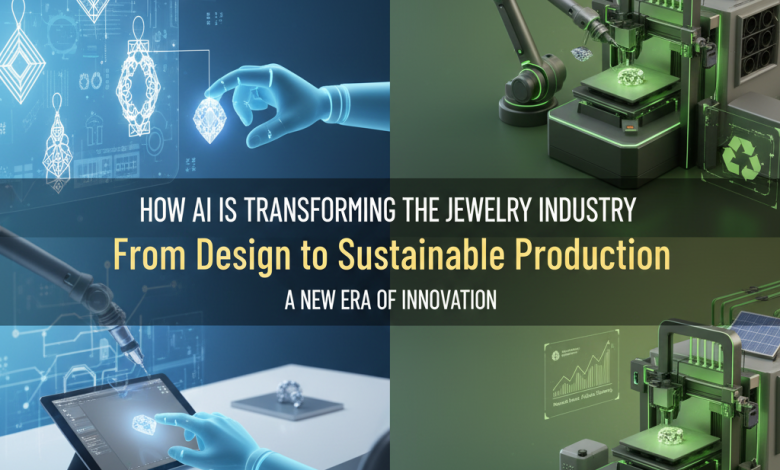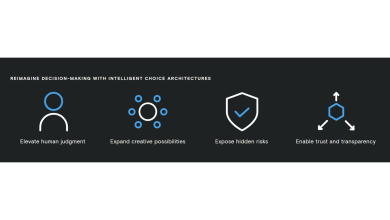
The jewelry business has worked with similar principles for hundreds of years — craftsmen, tooling, antiquated cycles. All that, then came AI to ruin the party and do it anew for everyone.
AI in the jewelry industry is not just a tech buzzword. Actually, it is changing the process of jewelry design, production, and distribution. The numbers back this up—the smart jewelry market is growing at 16.9% annually until 2030, showing how AI brings real innovation to this space.
LLMs and Generative Design: Creating What Wasn’t Possible Before
Large language models and generative AI can now understand design prompts like “art deco engagement ring, oval stone, vintage feel” and generate dozens of workable designs in minutes—not random garbage—actual designs that understand proportion and style.
What this means for lab-grown diamond rings and Moissanite Rings:
- Designers can explore complex geometric patterns that’d be impossible to sketch by hand
- AI tests structural integrity before making physical prototypes
- Multiple variations get generated rapidly, speeding up the creative process
- Lab-grown diamond rings with intricate settings become feasible because AI optimizes the mathematics while humans control aesthetics.
This isn’t replacing designers. It’s giving them superpowers.
Chatbots and Customer Service: Actually Getting Useful
Remember when jewelry website chatbots just frustrated you with canned responses? Yeah, those days are mostly over.
Modern AI chatbots powered by LLMs can now:
- Answer technical questions about stone quality and settings
- Explain the differences between moissanite rings and diamond options
- Guide sizing decisions based on customer measurements
- Handle care and maintenance questions
- Escalate to humans when actually needed
The key difference? These chatbots understand context and can hold actual conversations instead of matching keywords to pre-written answers.
Virtual Try-On: Seeing Before Buying
This is where AI in the jewelry industry gets seriously practical. 82% of consumers prefer trying products virtually before purchase, and AI-powered augmented reality makes that possible for jewelry.
How Virtual Try-On Actually Works
AI algorithms map your hand or neck in real-time using your phone camera. Then they overlay realistic jewelry images that adjust for:
- Your skin tone
- Lighting conditions
- Hand movements and angles
- Realistic shadows and reflections
You may not have ever laid eyes on moissanite rings or lab-grown diamond rings in real life. A virtual try-on helps them get a glimpse of how these alternatives will look on their real hands before making the purchase. No more trying to guess based on photos of what the product actually looks like.
Predictive Analytics: Making Smarter Inventory Decisions
Traditional jewelry manufacturing involved tons of guesswork. Make inventory based on last year’s sales and hope it sells. Often it didn’t.
AI in the jewelry industry uses predictive analytics to change that game entirely.
What AI Predicts
Machine learning algorithms analyze:
- Customer browsing and purchase patterns
- Social media trends and influencer posts
- Search data showing what people want
- Seasonal fluctuations and event calendars
- Economic indicators affecting luxury spending
The result? Manufacturers already know exactly what they need to manufacture before consumers even begin shopping.
Unlike mined diamonds, which have an extremely long lead time, lab diamonds can be produced in a matter of days, and predictive analytics mean brands can switch up stock levels relatively rapidly; for instance, if analysts discover that oval cuts are becoming the new ‘it’ stone, production turns around in weeks, rather than months.
Recommender Engines: Personalization That Actually Works
Generic product suggestions suck. AI-powered recommender engines actually understand your preferences.
How Modern Recommender Systems Operate
These systems track:
- What you browse and for how long
- Items you save or add to cart
- Your style preferences from past purchases
- Similar customers’ behavior patterns
Then they surface relevant options. Not “people also bought” randomness, but actual personalized recommendations.
If you’re browsing lab-grown diamond rings with minimalist settings, the AI won’t suddenly suggest ornate vintage pieces. It understands your aesthetic and offers more minimalist options—maybe in different stone shapes or metal types.
Sustainable Production: Where AI Actually Makes a Difference
Sustainability in jewelry has been more talk than action. AI in the jewelry industry is changing that with tangible results.
Material Optimization
AI analyzes designs to calculate the minimum metal needed while maintaining strength. Less material means:
- Less mining required
- Lower energy consumption
- Reduced waste during production
For lab-grown diamond rings and moissanite rings, AI monitors production processes to minimize energy use and maximize yield.
Quality Control at Scale
Gemstone images and data are uploaded to AI algorithms, which are able to grade lab-grown diamond rings according to cut, color, clarity, and carat weight with consistent precision. This ensures that quality is maintained across batches of production, and most of the imperfections are often caught that human eyes may miss.
The Real Challenges
Let’s be honest about problems.
- Homogenization risk: If everyone creates jewellery using more or less the same AI tools, would we still see diversity of approach? Maybe. It really depends on how designers put the tech to use.
- Trust problems: If an AI offers you a moissanite instead of a diamond, how can you be sure that the AI is recommending what is in your best interest, not what is in the AI’s interest, that is, the one with the highest commission?
- Job loss: Automation always raises the specter of job loss. These transitions are not uniformly beneficial to all.
These aren’t hypothetical. They’re happening now.
What Happens Next
AI in the jewelry industry is still in its early stages. The applications will expand, the tech will improve.
We’ll see:
- More sophisticated LLMs are creating novel design styles
- Virtual try-on approaching photo-realism
- Predictive systems anticipate trends before they happen
- Better integration across the entire supply chain
AI accelerates adoption for lab-grown diamond rings and moissanite rings by improving quality, reducing costs, and helping customers make informed choices.
That’s not hype. That’s the current trajectory.



